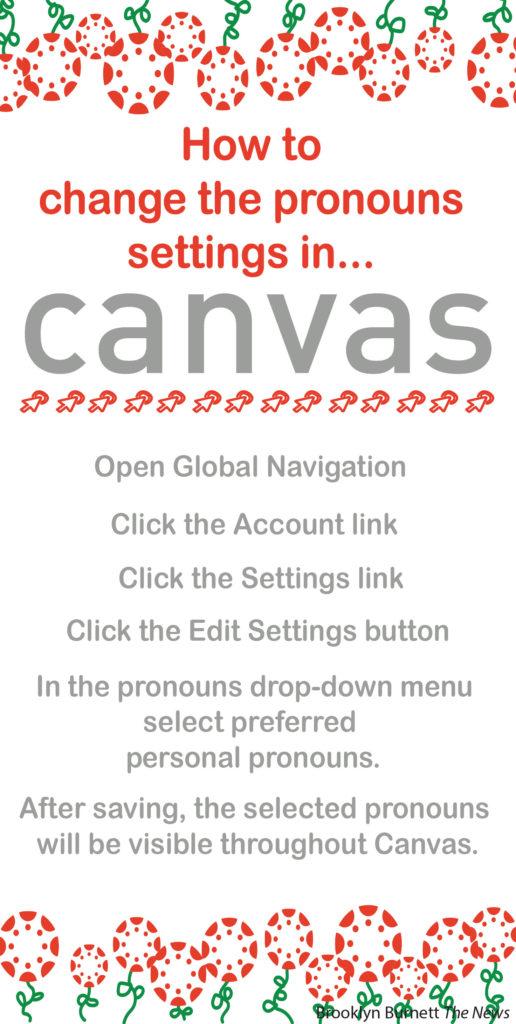Sarah Mead
Staff Writer
smead@murraystate.edu
Canvas now allows students and faculty to select personal pronouns on their user accounts to promote inclusion.
“It signals acceptance and an inclusive environment,” said Ihsan Alkhatib, associate professor and pre-law adviser. “We should recognize our diversity and [have] respect for everyone. As a member of cis majority, we take a lot of things for granted. The gender minorities need [recognition, acceptance and inclusion]. They see this identification as a recognition of their existence.”
The pronouns are displayed after a person’s name in various areas in Canvas, such as in comment fields, in discussion posts, on the people page and on the user’s profile page.
Murray State’s pronoun options include she/her, he/him and they/them. The pronoun options are managed by both Canvas and the educational institution that manages the account. Individuals cannot add pronoun options.
“I think the new feature is great [and] very welcoming for students and faculty,” said Maeve McCarthy, assistant dean of Jones College of Science, Engineering and Technology. “I think cis people should use their pronouns to normalize their use for everyone. We should tell people our pronouns when we introduce ourselves.”
Adding personal pronouns to educational tools like Canvas is a step closer towards creating an inclusive environment on campus.
“[Sharing pronouns] should totally be normalized, especially in group settings like classrooms,” said Carrie Jerrell, associate professor of English. “One easy way to normalize it is to offer your pronouns when you say your own name as you meet someone new. Just saying something like, ‘Hi! I’m Carrie. My pronouns are she/her,’ tells the person that you have an awareness of pronouns and their importance, and it gives them the opportunity to share, too.”
To change the pronouns setting in Canvas, open Global Navigation and click the Account link followed by the Settings link. Click the Edit Settings button, and in the pronouns drop-down menu select your preferred personal pronouns. After saving the settings, the selected pronouns will be visible in the user settings and throughout Canvas.
“It’s a simple but effective way to help students, especially transgender and nonbinary students, feel welcome and respected in our classroom spaces,” Jerrell said. “The more you share your pronouns and ask others about theirs, the easier and more natural it becomes.”




























































































